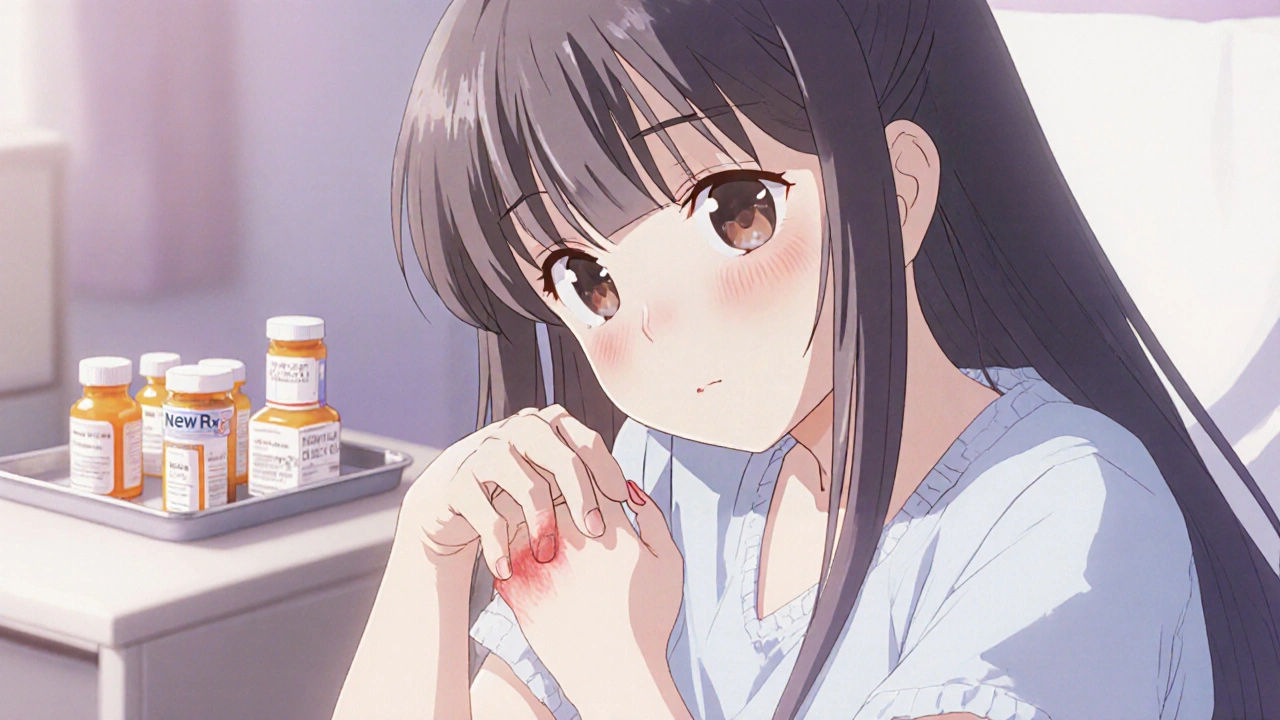
Ever taken a new prescription only to develop an annoying, relentless itch? That’s not imagination - it’s a real side effect called drug‑induced pruritus. While most patients brush it off, the itching can become severe enough to disrupt sleep, lower mood, and even cause people to abandon life‑saving therapies. This guide breaks down which drugs spark the itch, who’s most vulnerable, and concrete steps you can take to get relief without compromising your treatment plan.
What Is Medication‑Induced Itching?
In medical jargon, Drug‑induced pruritus is an uncomfortable skin sensation caused by one or more medicines. The reaction can appear minutes after a dose or develop after months of continuous use. Because the skin is a huge sensory organ, even tiny biochemical shifts can trigger the itch fibers that travel up the spinal cord to the brain.
How Medications Trigger the Itch
Scientists have identified three broad pathways:
- Immunologic: Classic allergic reactions (type I or type IV hypersensitivity) release histamine and other mediators that directly stimulate itch receptors.
- Pharmacologic: Some drugs change skin barrier function, cause dry skin, or provoke cholestasis, all of which indirectly raise itch signals.
- Neurogenic: Certain agents, especially opioids, act on the central nervous system and amplify the brain’s itch perception.
Knowing the pathway helps predict which treatments will work. If histamine drives the itch, H1 antihistamines often help. When the cause is neurogenic, antidepressants or gabapentinoids may be more effective.
High‑Risk Drug Classes
Not every pill causes itching, but a handful of medication families have a notorious track record:
| Drug class | Typical examples | Incidence (approx.) |
|---|---|---|
| Antibiotics | Tetracyclines, beta‑lactams, trimethoprim‑sulfamethoxazole | ~1 % of users |
| Antihypertensives | ACE inhibitors, ARBs (sartans), calcium channel blockers | 0.9 % (CCBs) - 1.1 % (heparin) |
| Opioids | Morphine, fentanyl, sufentanil | 60‑90 % after spinal/epidural dosing |
| Statins & fibrates | Atorvastatin, fenofibrate | ~0.5 % (case reports) |
| Antidepressants | Tricyclics, SSRIs | Variable, often neurogenic |
| Antihistamine withdrawal | Cetirizine, levocetirizine | Rare but severe; median onset 2 days after stop |
In a Johns Hopkins review of over a million patient records, heparin (1.11 %) and trimethoprim‑sulfamethoxazole (1.06 %) topped the list.Heparin an injectable anticoagulant linked to acute pruritus frequently shows up in surgical settings.
Who Is Most Likely to Develop the Itch?
Demographics matter. Large‑scale analyses reveal:
- Women represent about 70 % of reported cases, compared to 58 % among those without itching.
- Black patients have a higher susceptibility-40 % of cases vs. 23 % in controls-partly due to genetic differences in skin barrier proteins.
- Long‑term use is a red flag. The FDA found that 92 % of severe antihistamine‑withdrawal itch episodes occurred after three or more months of continuous therapy.
Age doesn’t show a strong pattern, but pediatric patients on chloroquine for malaria have reported itching rates of 55‑90 %.
Acute vs. Chronic Drug‑Induced Itching
The Medical Journal of Sweden (2010) classifies drug‑induced pruritus as:
- Acute: lasts less than six weeks. Often resolves once the offending drug is stopped.
- Chronic: persists beyond six weeks, even after discontinuation. May need additional pharmacologic therapy.
Recognizing the timeline helps clinicians decide whether a simple drug holiday will suffice or if a more involved treatment plan is needed.
How to Diagnose Medication‑Induced Itching
Diagnosing the cause can feel like detective work. Follow these steps:
- Medication review: List every prescription, OTC product, supplement, and even herb you’ve taken in the past three months. Antihistamines drugs that block H1 receptors, sometimes paradoxically causing itch when stopped are a common culprit.
- Temporal correlation: Note when the itch started relative to each medication’s start or stop date. A two‑day lag after stopping cetirizine is a classic pattern.
- Physical exam: Look for secondary signs-dry patches, excoriations, or rash-that might hint at a specific pathway (e.g., dry skin suggests a pharmacologic effect).
- Rule‑out other causes: Thyroid disease, liver dysfunction, and dermatologic conditions can mimic drug‑induced itch.
- Rechallenge (if safe): In a controlled setting, re‑introducing the suspected drug can confirm causality. This is rarely done unless the medication is essential.
Documenting the whole process helps protect patients from future re‑exposure.
Treatment Toolbox
There isn’t a one‑size‑fits‑all cure, but most clinicians work through a hierarchy of options:
| Step | Intervention | When it fits | Key pros | Key cons |
|---|---|---|---|---|
| 1 | Discontinue or replace offending drug | Non‑essential meds or viable alternatives exist | Directly removes trigger | May compromise disease control |
| 2 | Topical therapy (moisturizers, steroids, capsaicin) | Dry skin or localized itch | Low systemic risk | Limited for severe neurogenic itch |
| 3 | Systemic antihistamines (non‑sedating) | Histamine‑driven itch, acute onset | Easy to prescribe | May not work for opioid‑related itch |
| 4 | Neuromodulators (gabapentin, pregabalin, duloxetine) | Chronic, neurogenic itch | Target central pathways | Potential side‑effects, titration needed |
| 5 | Selective opioid antagonists (naloxone, naltrexone) | Opioid‑induced itch after spinal administration | Directly blocks opioid receptors | Requires monitoring for pain control |
Below we unpack the most common choices.
Topical Options
Moisturizers emollient creams that restore skin barrier lipids are the first line for dry‑skin‑related itch. Apply twice daily, especially after bathing. For inflamed patches, a low‑potency topical steroid a cream that reduces local inflammation (e.g., 1 % hydrocortisone) can calm the area within days.
Capsaicin cream works by desensitizing TRPV1 receptors after repeated use. Start with a thin layer once daily, increasing to twice if tolerated. Some patients note a burning sensation for the first 48 hours, but the itch usually fades after a week.
Systemic Antihistamines
Second‑generation agents like cetirizine, loratadine, or fexofenadine block H1 receptors without heavy sedation. They’re most effective when histamine is the primary mediator-common with antibiotic‑related rashes. For antihistamine‑withdrawal pruritus, the FDA recommends restarting the same drug; 90 % of cases resolve within a few days.
Neuromodulators and Antidepressants
When itch persists despite antihistamines, gabapentin (starting at 300 mg nightly) or duloxetine (30 mg daily) can quiet the central itch pathways. In a 2023 Cleveland Clinic series, 68 % of patients with opioid‑induced chronic itch reported meaningful relief after a 4‑week gabapentin trial.
Opioid Antagonists
If you’ve received spinal morphine for surgery and the next day the skin feels like it’s on fire, low‑dose naloxone (0.1 mg IV) can abruptly stop the itch. For patients who need continuous opioid therapy, oral naltrexone (25 mg) taken at night has lowered itch scores in up to 75 % of case reports.
Practical Tips for Patients and Providers
- Document every medication: Include over‑the‑counter drugs, vitamins, and herbal supplements.
- Don’t stop essential meds abruptly: If the culprit is vital (e.g., antihypertensive), discuss tapering or substitution rather than quitting cold turkey.
- Moisturize daily: Even if the itch isn’t from dry skin, a well‑hydro‑ed barrier reduces secondary irritation.
- Report adverse events: Use FDA’s MedWatch portal or your health system’s safety reporting tool. Patient‑reported cases accounted for 87 % of the 209 severe pruritus reports the FDA logged in 2023.
- Consider race‑specific risks: Black patients on chloroquine or certain antimalarials should be counseled about the high likelihood of itching.
Future Directions and Ongoing Research
Researchers are still untangling non‑histaminergic pathways. Nakao et al. (2023) call for more studies on cytokines like IL‑31 and neuropeptides that might explain why some patients don’t respond to antihistamines. Meanwhile, electronic health record analytics are flagging high‑risk prescriptions in real time, giving clinicians an early warning before the itch even starts.
One promising avenue is the development of selective neurokinin‑1 (NK‑1) antagonists, already approved for chemotherapy‑induced nausea, that have shown itch‑reducing effects in early‑phase trials. If those results hold, we could have a targeted pill for chronic drug‑induced pruritus that doesn’t interfere with the primary therapy.
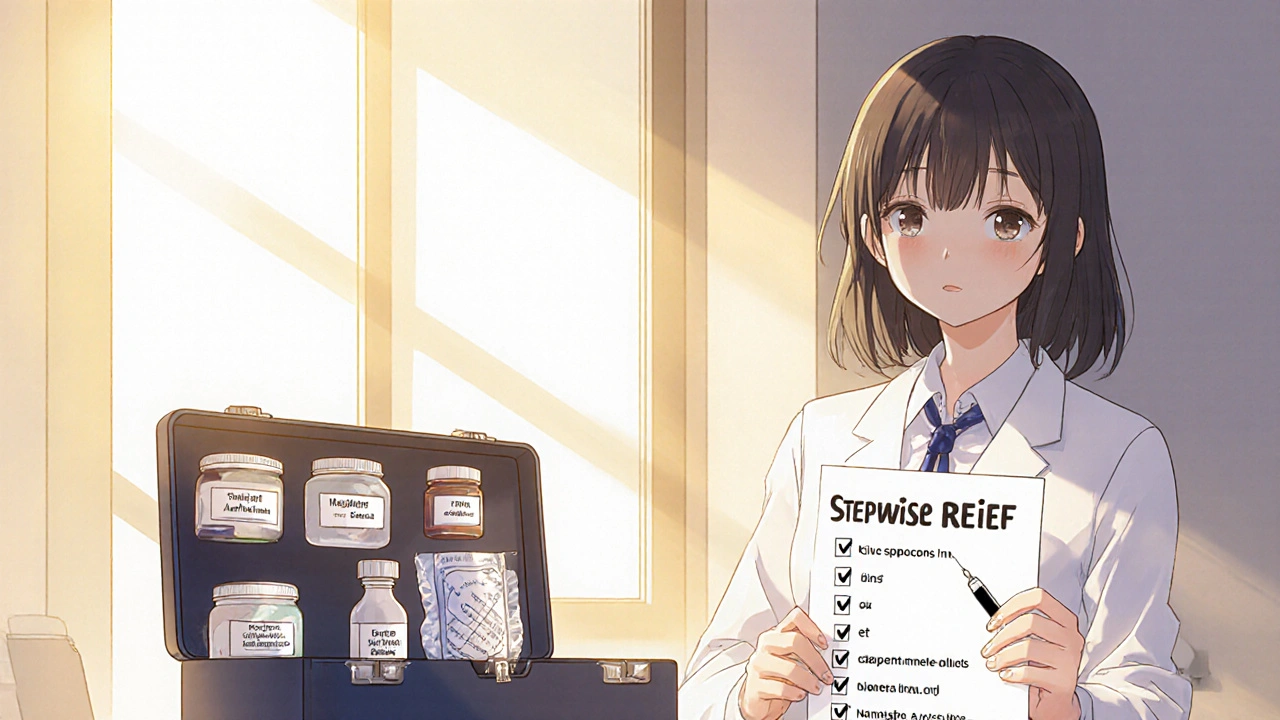
Bottom Line
If a new medication makes you scratch, you’re not crazy-your skin is reacting to a real pharmacologic trigger. By systematically reviewing your drug list, recognizing high‑risk classes, and applying a stepwise treatment plan (stop, topicals, antihistamines, neuromodulators), most people can regain comfort without sacrificing the benefits of their essential meds.
Which medications are most likely to cause itching?
Antibiotics (especially trimethoprim‑sulfamethoxazole), heparin, calcium‑channel blockers, opioids, certain statins, and long‑term antihistamines are the top offenders. The risk rises with prolonged use and in women or Black patients.
How can I tell if my itch is drug‑related?
Track when the itch started relative to each medication you’ve taken. A lag of a few days after stopping cetirizine, or immediate itching after a spinal opioid, are classic clues. A full medication review is essential.
Is stopping the drug always the answer?
Ideally yes, but not if the medication is life‑saving. In those cases doctors may switch to a lower‑risk alternative or add targeted therapies (e.g., gabapentin) while keeping the original drug.
What topical treatments work best?
Start with fragrance‑free moisturizers applied twice daily. If there’s redness or secondary dermatitis, a low‑potency steroid (1 % hydrocortisone) for 5‑7 days helps. Capsaicin can be tried for chronic, non‑inflamed itch.
Can antihistamine withdrawal cause severe itching?
Yes. The FDA reported 209 cases between 2017‑2023, with most patients experiencing itching 1‑5 days after stopping cetirizine or levocetirizine. Restarting the same antihistamine resolved symptoms in about 90 % of cases.

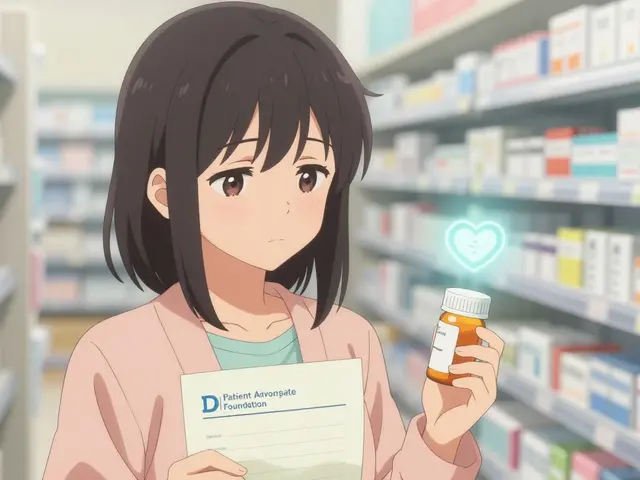

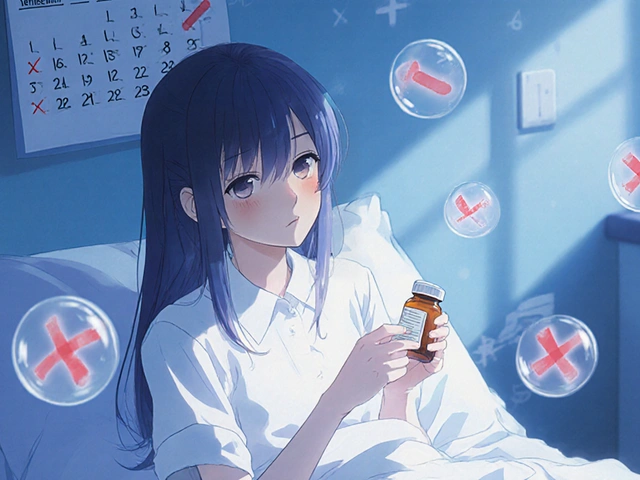
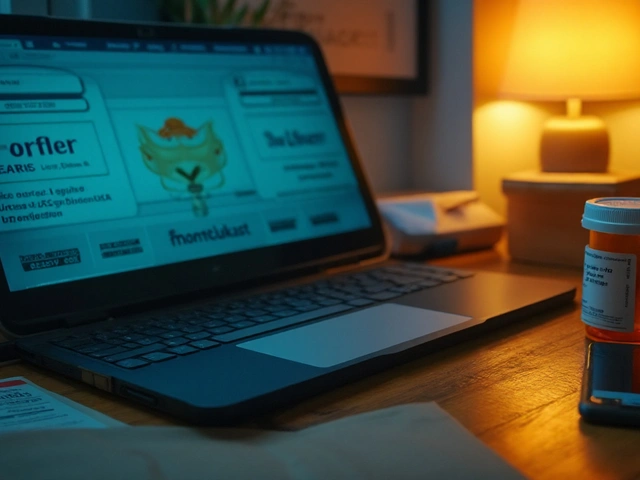
Comments (11)
Kevin Stratton
Imagine the skin as a messenger, translating unseen chemical whispers into a relentless itch that can drive anyone to the brink of madness 😊. When a drug tweaks the neurochemical balance, the signal cascades like a faulty alarm system, and the brain dutifully obeys. This mental picture helps us understand why simply swapping a pill can sometimes silence the noise without a whole arsenal of treatments.
Megan Dicochea
Thanks for pointing out the demographic trends. Women and Black patients seem to bear the brunt of this side effect and that data should guide prescribing habits.
Jennie Smith
Whoa, the cascade of options is like a painter’s palette! 🌈 Moisturizers lay down the base, steroids bring the bold strokes, and gabapentin adds that subtle glimmer of relief. If you’re stuck in the neurogenic loop, think of gabapentin as the dimmer switch for those over‑excited itch fibers. Topical capsaicin? It’s the spicy salsa that eventually makes the itch dance out of the spot. Keep the skin hydrated and the itch will lose its grip faster than a bad habit.
Anurag Ranjan
Quick tip: always document over‑the‑counter supplements alongside prescriptions; they often hide in plain sight.
James Doyle
Drug‑induced pruritus exemplifies the ethical quagmire of modern pharmacotherapy, where the iatrogenic burden must be balanced against therapeutic gain. The pathophysiology is not a monolith; immunologic, pharmacologic, and neurogenic axes intersect in a complex network of cytokines, histamines, and central neurotransmitters. When clinicians default to a one‑size‑fits‑all antihistamine, they ignore the heterogeneity of the itch’s etiology, thereby perpetuating patient suffering. Statins, for example, trigger a low‑grade inflammatory cascade that subtly primes cutaneous mast cells, while opioids hijack mu‑receptor pathways to amplify central itch perception. Moreover, the epidemiologic data reveal a disproportionate impact on women and patients of African descent, implicating genetic polymorphisms in barrier proteins and drug metabolism enzymes. This disparity mandates a precision‑medicine approach, integrating pharmacogenomic testing into routine prescribing practices. The therapeutic hierarchy-discontinuation, topical measures, systemic antihistamines, neuromodulators, and opioid antagonists-must be applied with clinical rigor, not as a checklist. Gabapentin, despite its off‑label status, exhibits robust efficacy in attenuating central sensitization, yet clinicians often shy away due to its sedative profile. Similarly, naloxone’s utility in opioid‑related itch is underutilized because of fear of reversing analgesia, despite evidence supporting low‑dose protocols that preserve pain control while quelling pruritus. The FDA’s MedWatch reports underscore a systemic failure to capture real‑world adverse events promptly, suggesting that post‑marketing surveillance infrastructures require overhaul. Future research into NK‑1 antagonists offers a promising avenue, as these agents target substance P pathways implicated in chronic itch. Until such targeted therapies become mainstream, interdisciplinary collaboration between dermatologists, pharmacists, and primary care providers remains the cornerstone of effective management. In sum, scratching beyond the superficial reveals a tapestry of biochemical, genetic, and sociocultural threads that must be woven into patient‑centered care plans.
Edward Brown
Ever wonder why the pharma giants rarely mention the itch in their glossy brochures they hide it like a secret code embedded in the fine print. The quiet rollout of new antibiotics coincides with a spike in unexplained pruritus reports, and the whispers in medical forums hint at a coordinated downplay. One could argue the silence is intentional to protect market share, especially when the itch drives patients off lifesaving regimens. The pattern is too consistent to be mere coincidence, and the lack of transparent data feeds the paranoia that we are being fed a sanitized version of reality. Stay vigilant and question the narrative.
ALBERT HENDERSHOT JR.
Friends, remember that the first step toward relief is empowerment through knowledge 😊. Conduct a thorough medication audit, prioritize stopping non‑essential agents, and consider a stepwise approach: moisturizers, topical steroids, then systemic options if needed. Consistency in skin care often yields measurable improvement within weeks, and collaborating with your provider ensures that the therapeutic plan respects both efficacy and safety.
Suzanne Carawan
Oh sure, let’s just keep piling on more pills and hope the itch magically disappears while we ignore the root cause.
Kala Rani
Maybe the itch is a test from the universe to see if we pay attention to our own bodies rather than blindly following prescriptions.
Donal Hinely
Yo, the whole pharma hustle is a circus and the itch is just the clown juggling your discomfort while they cash in on your meds. Stop being a pawn, demand alternatives!
christine badilla
This is the most dramatic itching ever!!!